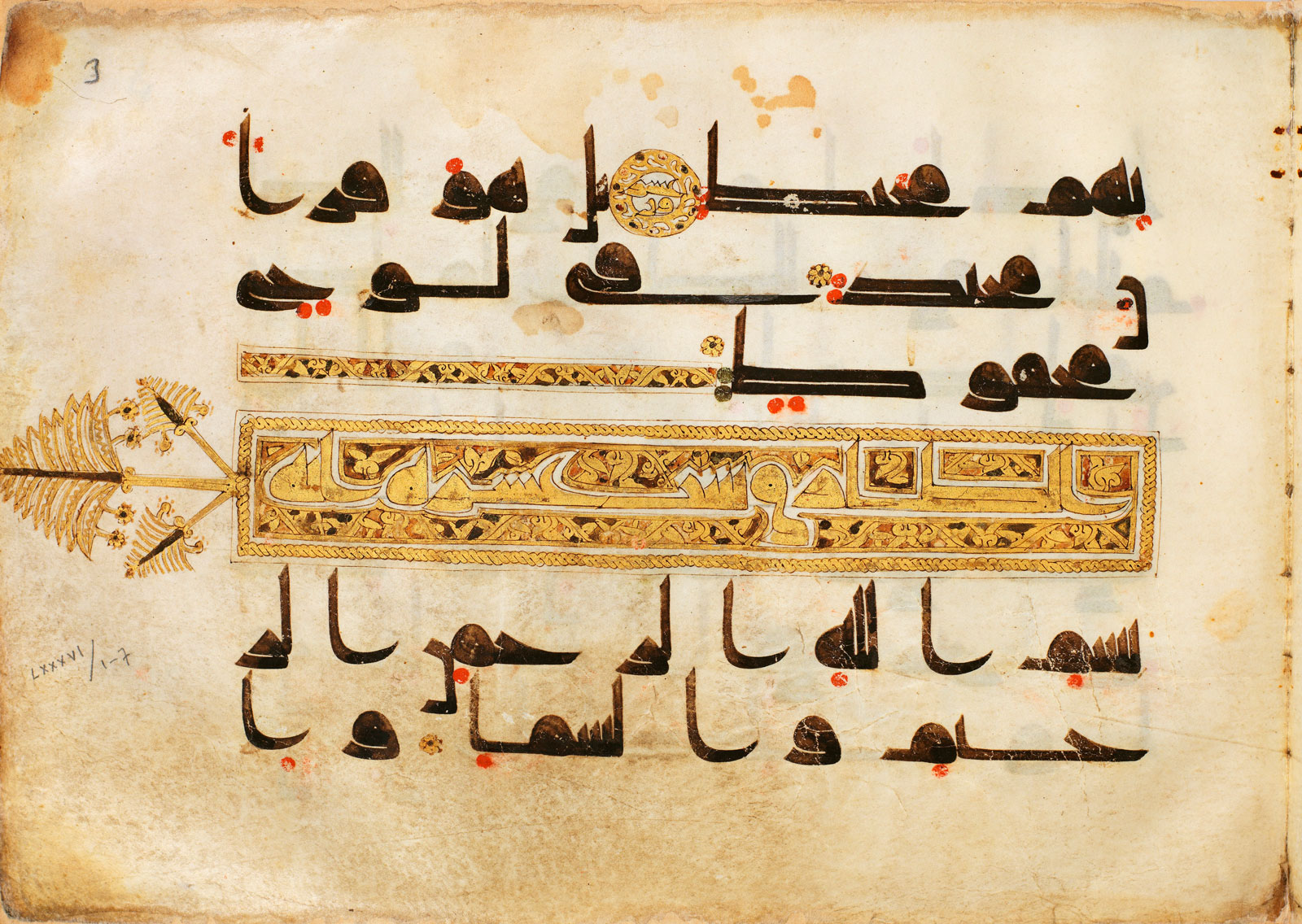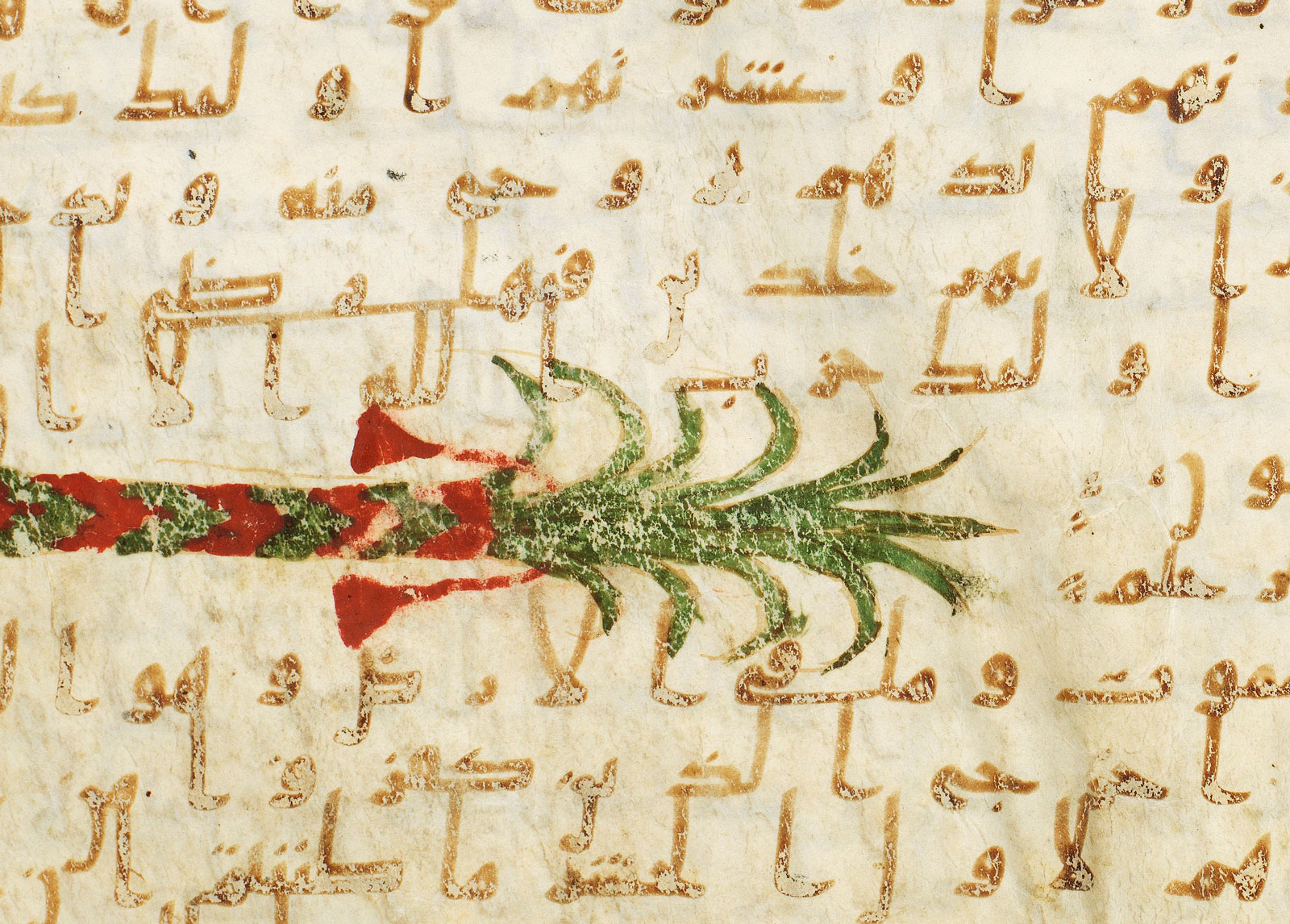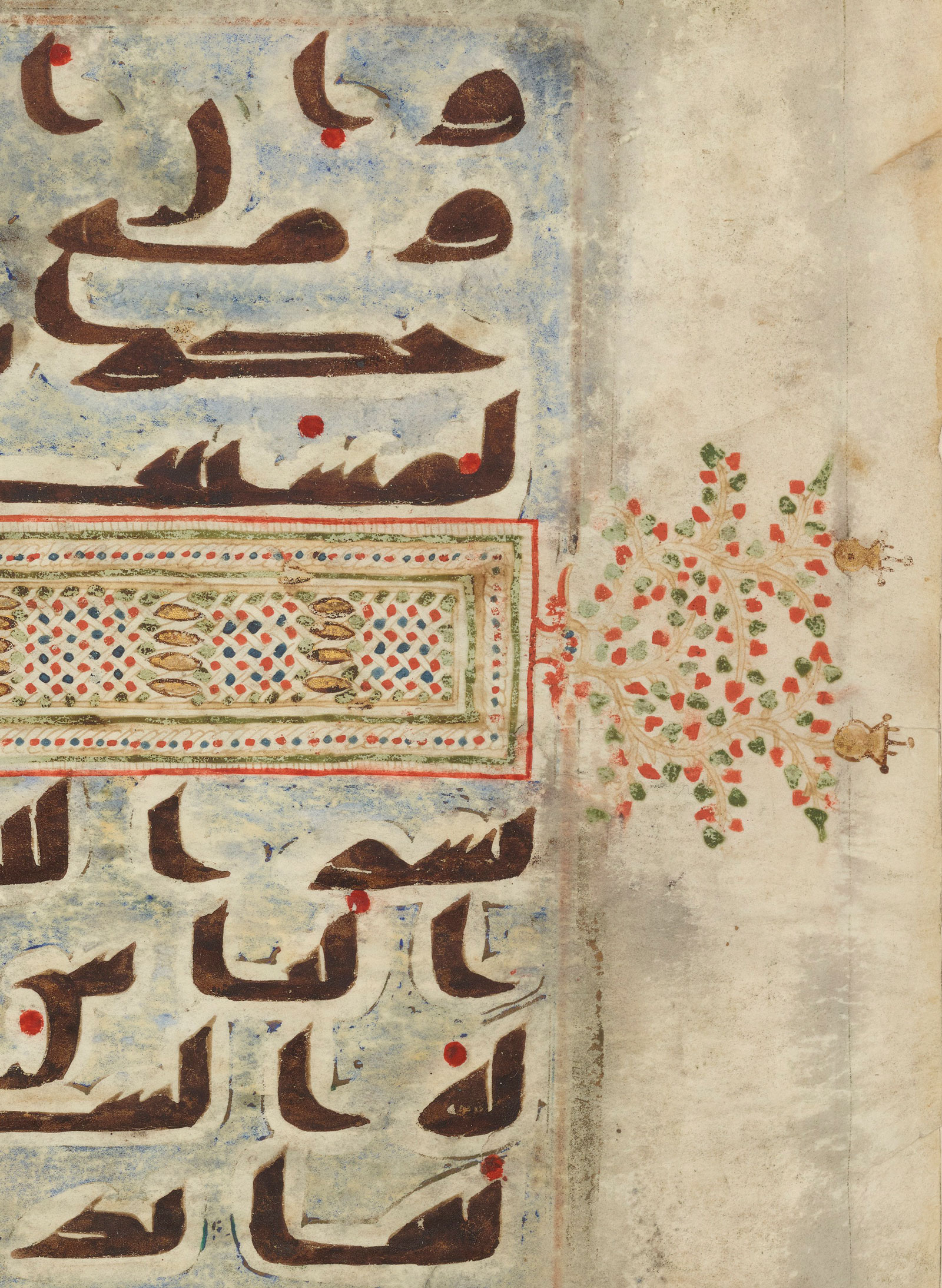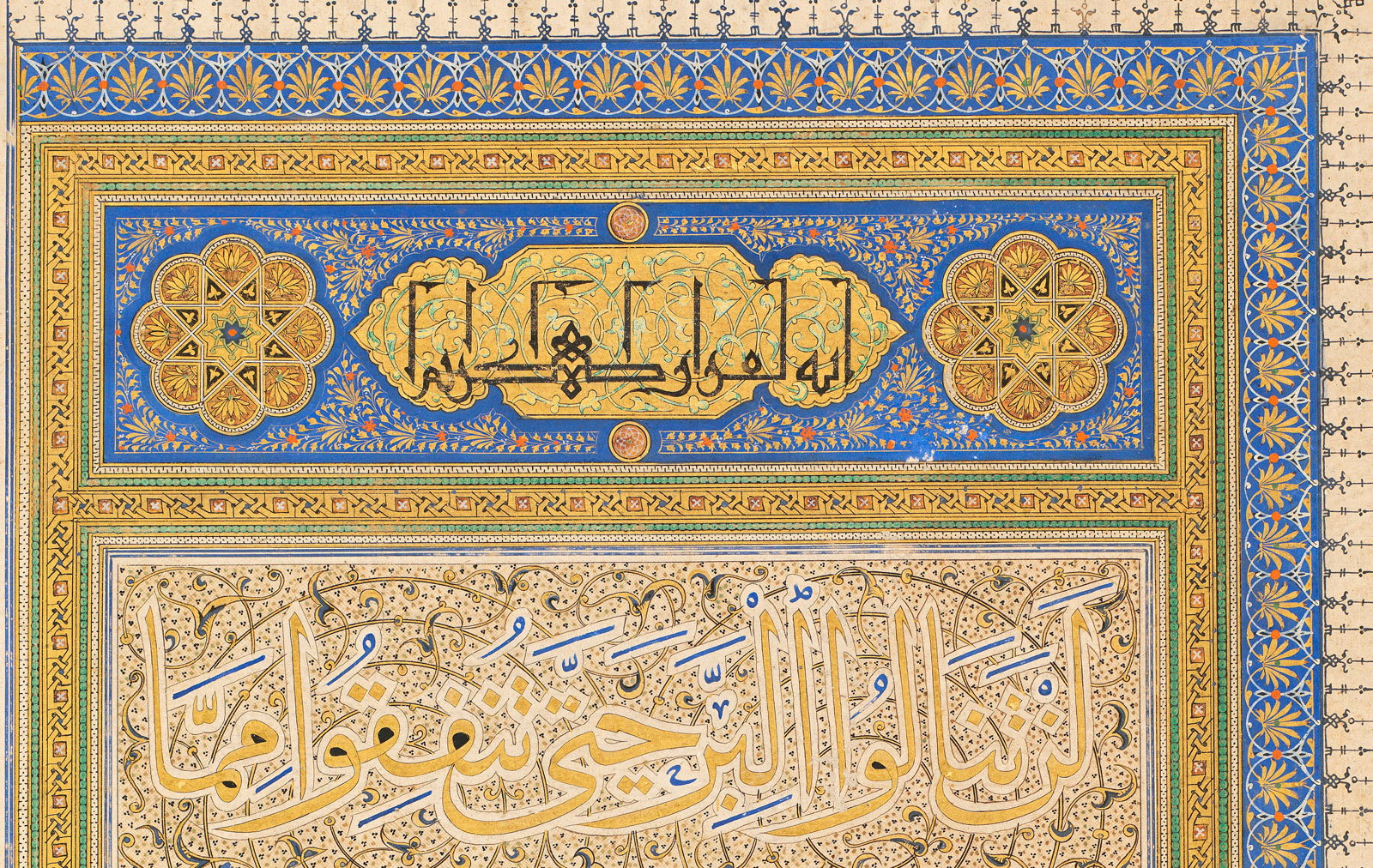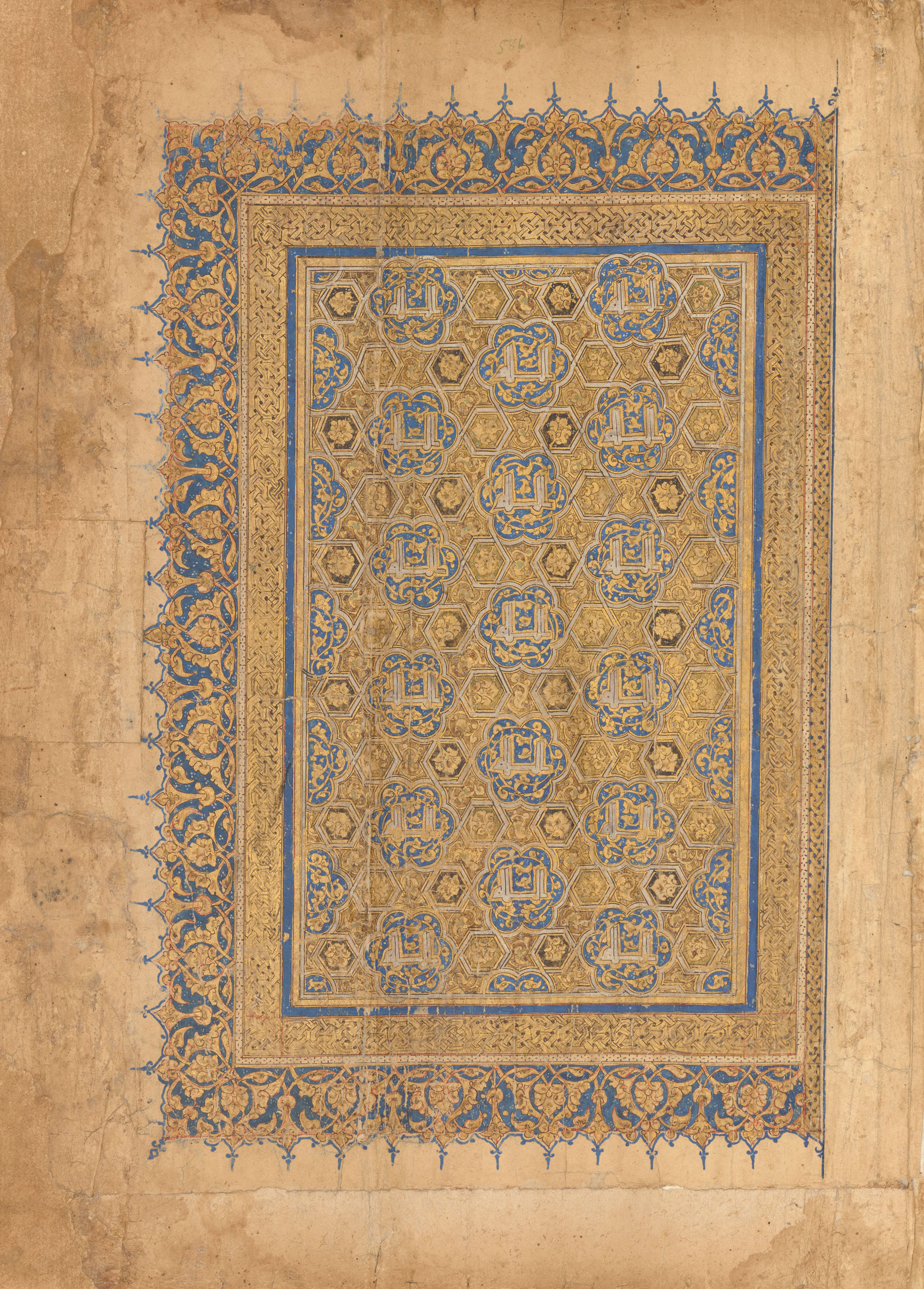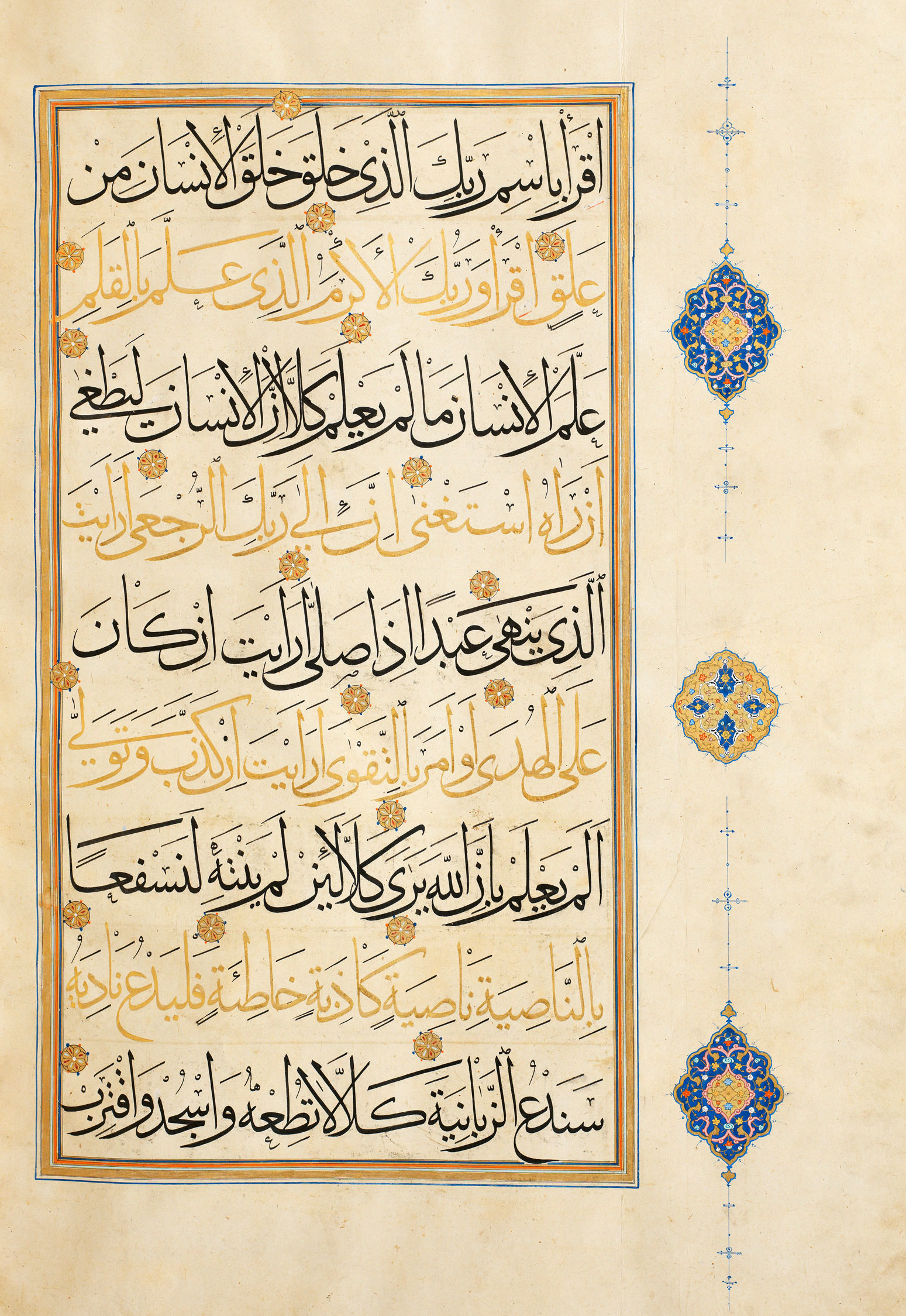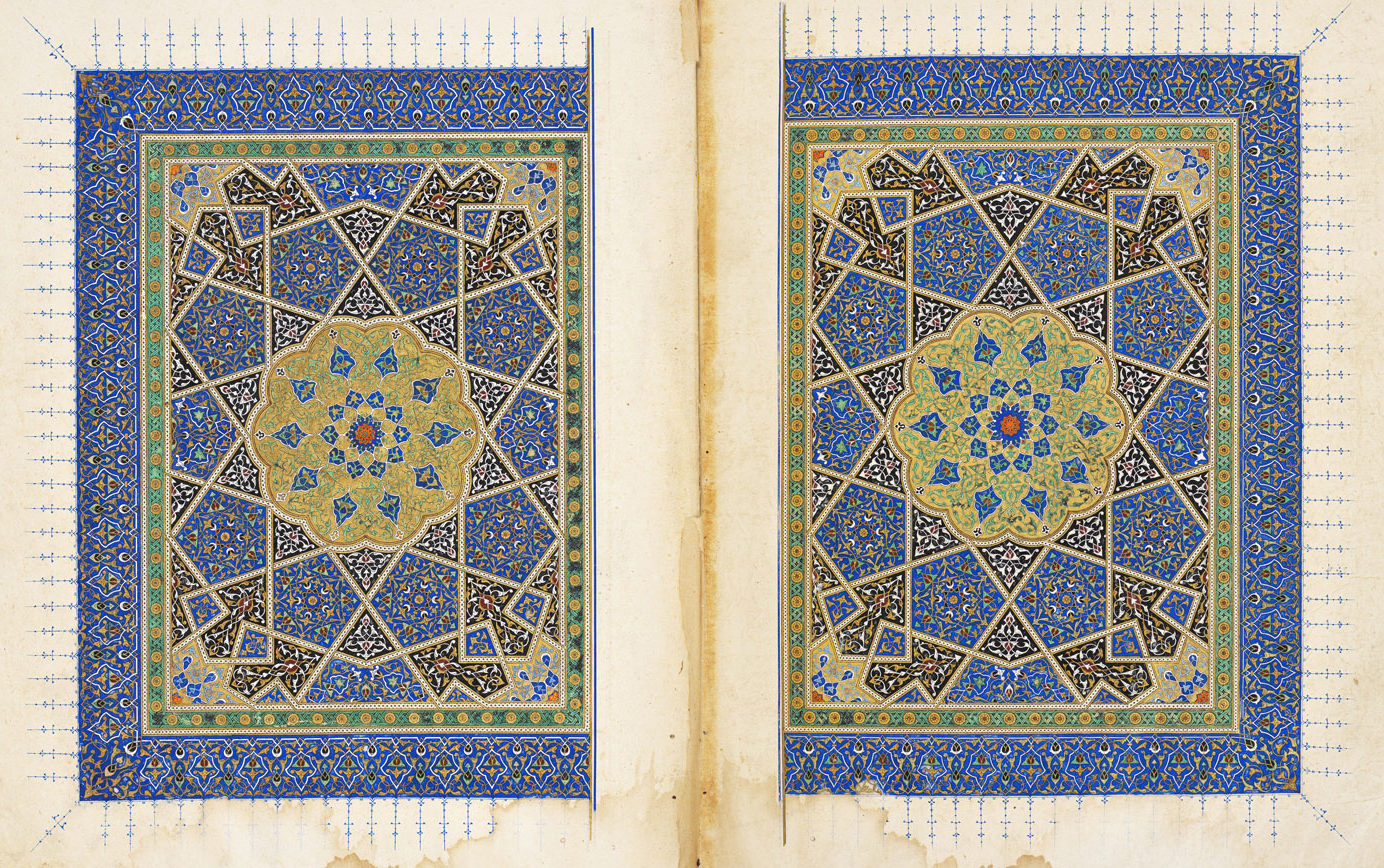In the beginning, long before ISIS or al-Qaeda, before the smiling suicide bombers and black flags and all the other lurid signposts we have come to associate with Islam, there were manuscripts. They emerged from the desert in the seventh and eighth centuries AD: yellowed animal-skin parchments inscribed with Arabic letters that proclaim a faith in one God. Some were written on the shoulder bones of camels, or stripped palm-branches. No one knows who wrote them. They may have come from many hands in disparate places. But at some point, a powerful story emerged to bind them. The angel Gabriel, it was said, recited them to a man named Muhammad in a cave (and later outside of it). This myth spread and became the basis of a new religion whose early adherents, fierce warriors from the Arabian peninsula, rode north and west to conquer vast territories with amazing speed. In the glow of their triumph, they began to gather and collate these vagabond pages into a holy book, zealously stamping out variant texts and passages that might cast doubt on what became a founding principle of Islam: the Koran’s status as the direct and unmediated word of God.
Some of these early manuscripts are now on display, under glass, at the Arthur M. Sackler Gallery in Washington, D.C., together forming an ur-text in fragments. They are yellowed pages, splotchy at the edges, with lines of brown Arabic text in the stark, vertical script known as Hijazi. One of them includes colorful little designs—a horizontal date-palm in red and green, a string of diamond shapes—to separate the suras, or chapters. Gazing at these pages is a peculiar, faintly sacrilegious experience. They give rise to thoughts that would merit execution in certain parts of the world. Historical criticism of the Koran remains a taboo in Muslim societies. Even in the West, such scholarship has been stunted by the shadow of Islamic orthodoxy and the threats that come with it. One effect of this orthodoxy has been to obscure a remarkable fact: the first full Korans we possess are from the ninth century, some two hundred years after the death of Muhammad. Prior to that, there are only pages and fragments. Who wrote them? Was the authors’ conception of Islam anything like our own? What did Muhammad mean to them? And is it possible they copied them from texts written centuries earlier?
Such questions lurk around any religion and its origins. But the Koran’s status is different from that of the holy books in any other major religion. As the Encyclopedia of Islam points out, “the closest analogue in Christian belief to the role of the Kur’an in Muslim belief is not the Bible, but Christ.” The Koran is an embodiment of God’s word. It is held so sacred that a host of fastidious traditions adhere to it: it must be placed at the top of any pile of books; it must be held above the waist. Muslims have been excommunicated for the seemingly modest claim that their holy book, though uttered by God, is composed of human language that is historically specific. For most orthodox Muslim scholars, the Koran is outside of human history and far above it.
And yet there they are, these manuscripts, tempting the onlooker with their quotidian stains and pen-strokes into a defiantly localized, imperfect moment in time. One of the more striking early examples is written on light-blue tinted parchment, with a decorative tree in the right-hand margin composed of green leaves and red fruit; two tiny mosque lamps hang from the tree’s crown. It is from the ninth century, when calligraphers first began to adorn their pages with art.
It is rare to see such a collection of early Korans, and the current exhibit is on loan from one of the world’s great repositories, the Museum of Turkish and Islamic Arts in Istanbul. The Turks established the museum a century ago, bringing the texts from all corners of their shrinking empire to the capital with the goal of protecting it from theft and damage at a time of war and turbulence. (Given the civil wars raging around the Arab region today, it seems all the more likely that some of these materials might otherwise have been destroyed.) One of the largest components of the collection—including the earliest manuscripts—came from the Ummayad Mosque in Damascus, where some 200,000 folios and fragments had been sitting for centuries in a storage room off the mosque’s main courtyard. Islamic doctrine forbids the destruction of the holy book, and such storage rooms or “paper graves” are relatively common across the Islamic world. Another such cache of texts (not on display in Washington but discussed in the show’s accompanying catalog), was discovered in 1972 in the roof of a mosque in Sanaa, Yemen, and includes very early manuscripts that deviate from standard Koranic text. The Yemeni fragments seemed to suggest an evolving document, and for that reason, they have been controversial, and few scholars have been granted permission to see them.
Advertisement
Islamic tradition maintains that the Koran was formalized by the Caliph Uthman in about 650 AD. In this account, one of the companions of the Prophet Muhammad complained to Uthman about divergences in the way the Koran was being recited. Uthman responded by appointing a group to gather manuscript leaves, soliciting recollections from those who had known the Prophet, and reconciling any differences. When they had agreed on a full text, Uthman had it bound and sent to each of the provinces, ordering all other texts to be destroyed. (Even Shiite Muslims, whose version of Islamic history splits off from mainstream Sunnism soon after this point, accept the Uthmanic codex.) This version is neat and convenient, and may represent some version of the truth. But the persistence of minor variations in the text well past Uthman’s time suggests that it may also be a fable.
In the first decades after Muhammad’s death, the Koran—assuming it existed as a single work—was an oral document. The earliest manuscripts lack all short-vowel markings, and appear to have been used as aides-mémoires for recitation rather than as texts to be read word for word. These markings are gradually introduced over the following century, perhaps partly in response to the decision by the caliph Abd al Malik, who reigned from 685 to 705, to promote Arabic as the official language of the empire.
One of the striking features of the Sackler show is the visual progression of the Koran from the simplicity of early Arabian styles to ever more detailed and colorful traditions of graphic art, fed by Persian influences. Over the centuries, new calligraphic styles emerged, including the more cursive scripts known as naskh, muhaqqaq, and thuluth. The Mongol conquests, for all their horror, appear to have fostered cross-cultural exchanges: one of the manuscripts, dated to 1303 and apparently produced in Mosul, is written in several different scripts, with a running Persian translation in small, delicate letters in between the lines of Arabic text. By this time, new technologies had streamlined and eased the scribes’ work. Ruling boards, made with threads of silk stretched over a cardboard, formed horizontal lines for calligraphers to follow. Meticulously painted medallions appeared in the margins. Starting in the fourteenth century, ornamentation became so elaborate that the jobs of inscribing and illustrating a Koran were separated, with calligraphers and artists attaining renown for their skills.
The Sackler show has examples of some of the most gloriously baroque Koranic art, much of it from the Safavid period in Iran. These pages are unimaginably different from their seventh century predecessors: jungle-like displays of gold and lapis, full of roses, hyacinths, carnations, and lance-shaped leaves. It is hard not to wonder whether sectarian differences played some role in all this voluptuousness, or fostered some degree of rivalry between Shiite Iran and the Sunni world to its west. But there is little sign of such difference in the manuscripts, which remain almost entirely in Arabic. Ecumenical traditions held sway until the sixteenth century, with some inscriptions paying homage to both the orthodox caliphs and the twelve imams of Shiite Islam. And the Persians were not alone: there is plenty of florid and spectacular work by Arab and Turkish masters in the exhibition. From Tabriz to Istanbul, this meticulous, miniature art appears to follow Islam’s expansion into a more urban and sophisticated civilization. It is easy to imagine Ottoman sultans and their consorts lovingly turning the illuminated pages of these Korans, or touching their leather-bound covers one last time before offering them as ceremonial gifts to seal a treaty or cement an alliance. Some of the volumes on view in Washington were used in exactly those ways.
Yet one region is notably absent from this artistic narrative as the centuries roll onward: the Arabian peninsula itself. Having given rise to Islam and its holy book, the desert heartland recedes into ascetic silence. Not until the discovery of oil in the twentieth century did the tribes of central Arabia begin again to export their puritanical visions to foreign lands. But that, of course, is another story.
Advertisement
“The Art of the Qur’an: Treasures from the Museum of Turkish and Islamic Arts,” is on view at the Arthur M. Sackler Gallery in Washington, D.C., through February 20.


